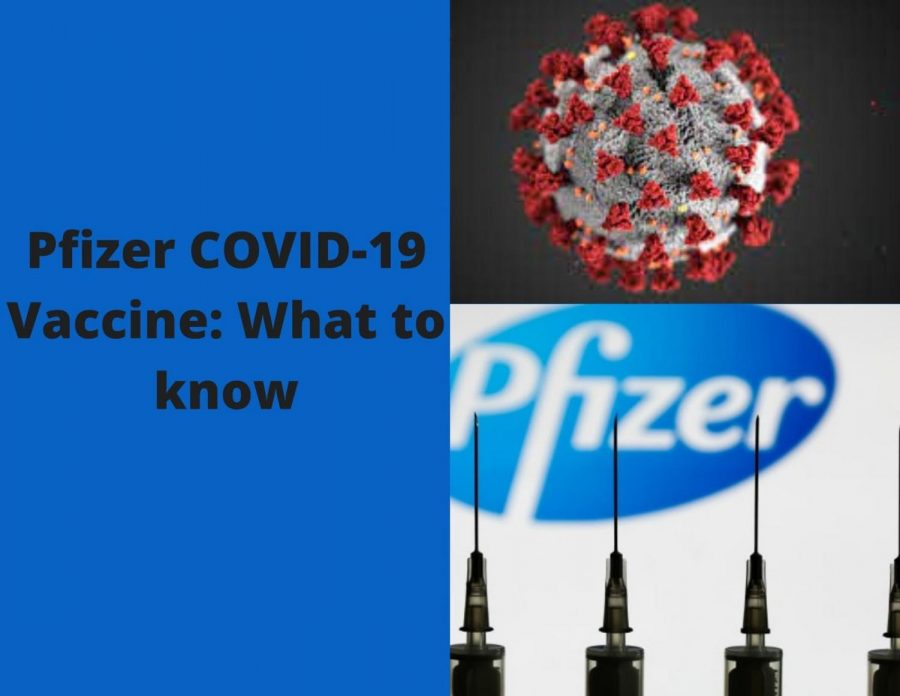Pfizer offers hope for successful vaccine
Trials show 90% success rate, according to company
November 12, 2020
Just this week, the medical giant Pfizer announced positive progress on its COVID vaccine. Trials of the vaccine boasted a 90% success rate, which came as a welcome relief to a nation exhausted by a recent spike in COVID cases, as well as new strict guidelines.
Creating and manufacturing a successful vaccine is no easy task. From an operational standpoint, “vaccines are very seasonal and very expensive,” said Richard De Schutter, former CEO of both G.D Searle and Dupont Pharmaceuticals in an interview with The Forest Scout.
However, according to reports this week, Pfizer has managed to create a vaccine that De Schutter calls an “amazing scientific breakthrough.” Out of the initial 44,000 recipients, the Pfizer vaccine boasts a 90% success rate, far exceeding the required FDA success rate of 50%.
Now, De Schutter says Pfizer needs to tackle the logistical aspects of getting this vaccine out to people. The virus has already killed 243,000 Americans, and a recent spike in cases has health experts worried about the months ahead.
The COVID vaccine is unlike most vaccines because it is not a weakened version of itself. For example, the flu vaccine puts a small amount of the actual flu virus into your body, forcing the immune system to create what are called antibodies, which are specific cells assigned to fight off the sickness.
What makes the COVID vaccine different is the way that it works. We all recognize those scary-looking spikes that dot the outside of the COVID virus. The new technology developed by Pfizer extracts and modifies the genetic code within those spikes to create what’s called a messenger RNA or mRNA. These messengers enter the body and alarm the immune system because the body is not used to these types of proteins.
The body will then create and build a defense system of antibodies specifically created to eliminate the spikes of the COVID virus, thus defeating the virus from spreading. Meaning if you were to take the vaccine, you would be injecting just the mRNA spikes and not the virus itself.
“That’s why not only the effectiveness but also the safety of this vaccine is so exciting,” said De Schutter.
From a logistical standpoint, the vaccine needs to be stored at around -100 degrees Fahrenheit, which will be a challenge for most hospitals. What Pfizer is going to do is disperse this vaccine in special made cryogenic containers. These cryogenic containers are advanced chambers that will keep the vaccine at the required temperature. Within these containers will be a tracking device so that Pfizer can make sure that vaccines go where they are supposed to.
Despite this being a complicated vaccine to administer, it is at the forefront of modern medicine, De Schutter said.
“It’s as an unprecedented logistical challenge as almost the scientific breakthrough that led to it,” he said.
Once the vaccine has arrived at its destination, it has a very short shelf life. Efficiency by the distributor has to be spot on in order to maximize vaccinations. On top of that, this is not a one and done type of deal; the recipient must receive two doses, three weeks apart.
There is speculation as to the order in which this vaccine is distributed, but Pfizer said they will be prepared to manufacture hundreds of millions of doses by the end of next year.
The predicted order as of now is as follows.
Phase 1: Health care workers and first responders
Phase 2: People with underlying health conditions (High risk), and elderly people living in retirement homes, or densely populated elderly neighborhoods.
Phase 3: Essential workers at high risk of exposure, people in prison and homeless shelters, people who have moderate underlying health conditions, and any other older people who have not been vaccinated yet.
Phase 4: Young adults and children, and other essential workers at increased moderate risk of exposure.
Phase 5: All remaining people.
In terms of the pricing for this vaccine, De Schutter said that “this is not a case where pharmaceutical companies are looking for a financial gain; I don’t think that price is going to be an issue.”
With a vaccine as crucial as this, there are obviously going to be a fair share of challenges along the way. However, the fact that Pfizer has made it this far so quickly, (just under eleven months), has shed a much-needed beam of hope not only on the American people but all of humanity.
(Full disclosure: The author of this article is related to Richard De Schutter.)








Facts over Feelings, lib!! (but don't fact check me, that's censorship) • Nov 13, 2020 at 11:53 am
@Fact_Lover
I totally agree! Some more food for thought: Dora claims to be “an explorer” but she travels exclusively through mapped territories! Curious…
Fact_Lover • Nov 12, 2020 at 11:10 pm
HMMM a vaccine that comes directly after the election. Suspicious
NOT an anti-vaxxer (sometimes) • Nov 12, 2020 at 9:29 pm
Don’t take the vaccine if you are younger than 55!